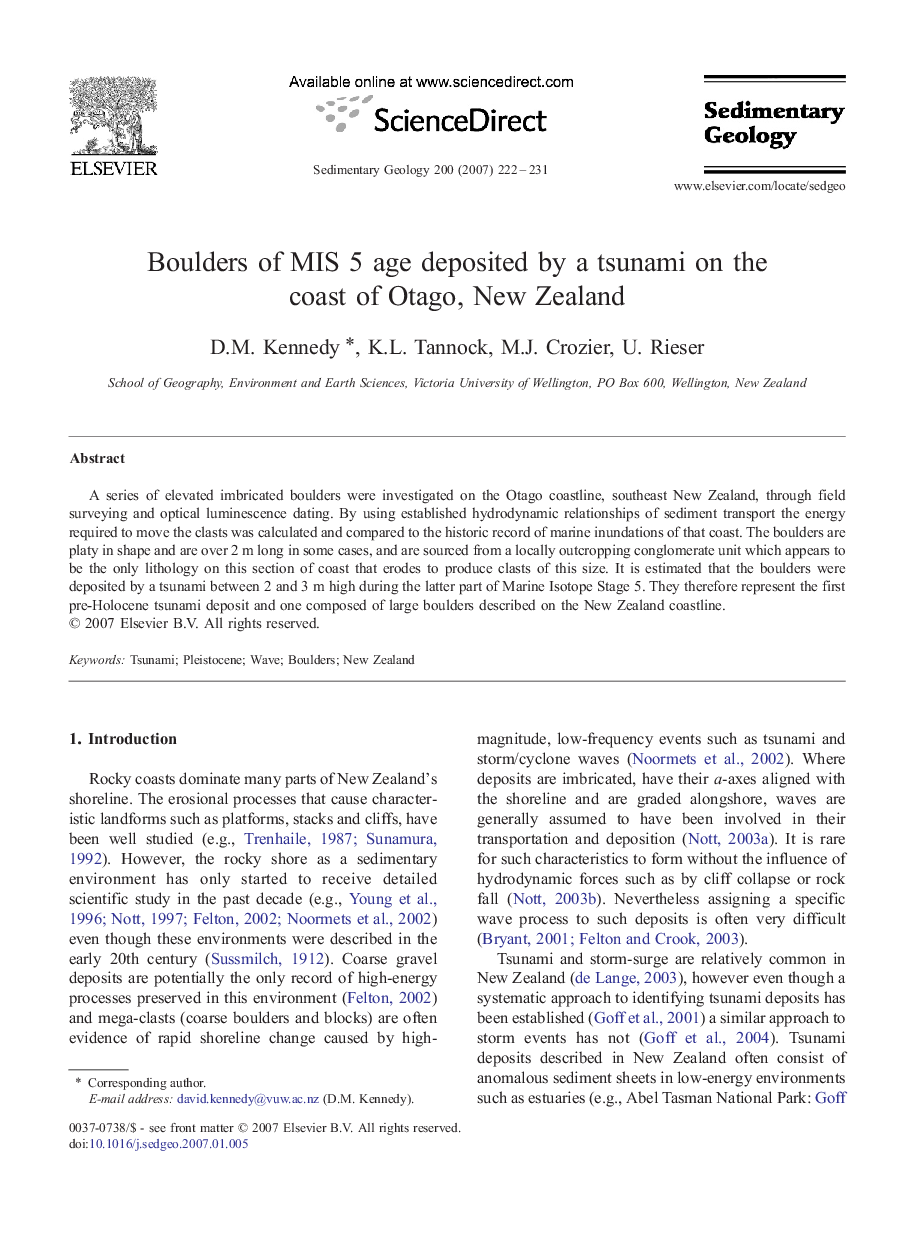| Article ID | Journal | Published Year | Pages | File Type |
|---|---|---|---|---|
| 4690716 | Sedimentary Geology | 2007 | 10 Pages |
A series of elevated imbricated boulders were investigated on the Otago coastline, southeast New Zealand, through field surveying and optical luminescence dating. By using established hydrodynamic relationships of sediment transport the energy required to move the clasts was calculated and compared to the historic record of marine inundations of that coast. The boulders are platy in shape and are over 2 m long in some cases, and are sourced from a locally outcropping conglomerate unit which appears to be the only lithology on this section of coast that erodes to produce clasts of this size. It is estimated that the boulders were deposited by a tsunami between 2 and 3 m high during the latter part of Marine Isotope Stage 5. They therefore represent the first pre-Holocene tsunami deposit and one composed of large boulders described on the New Zealand coastline.
